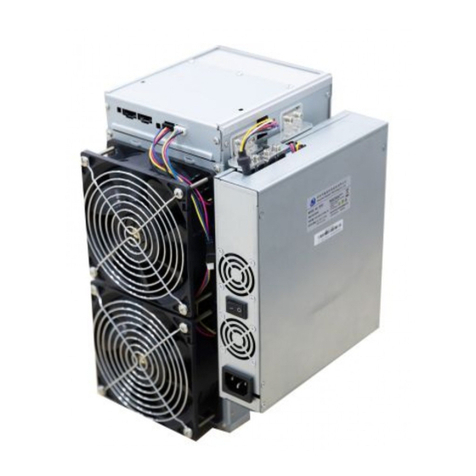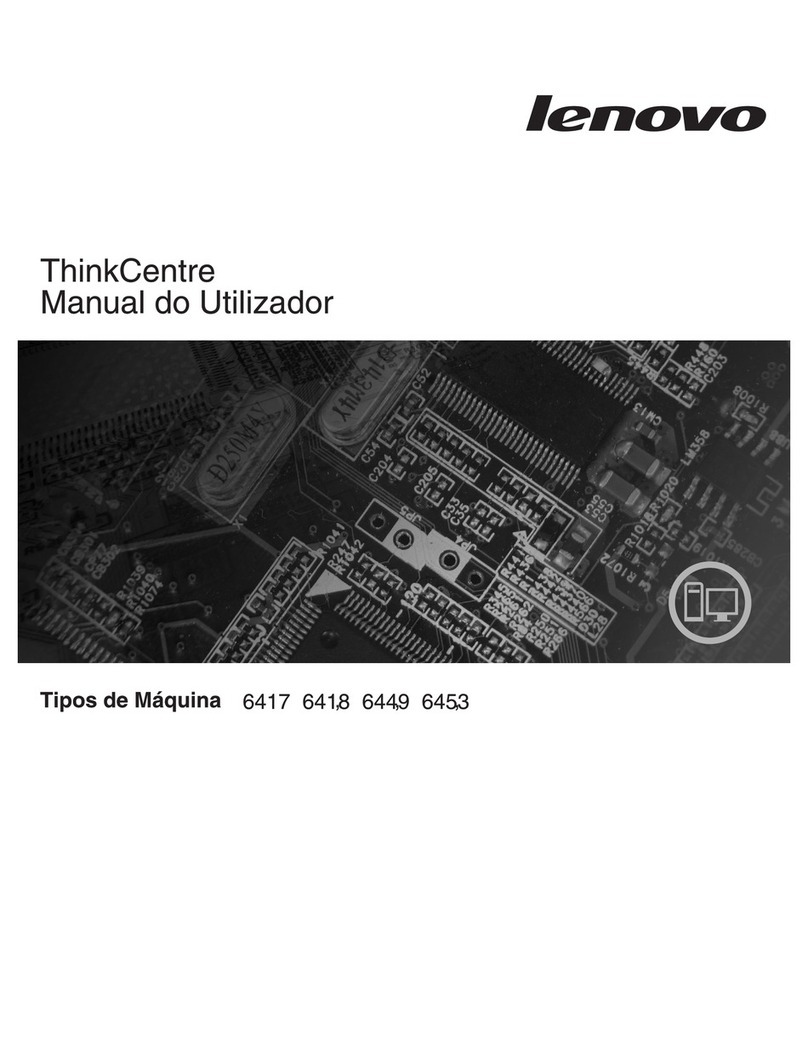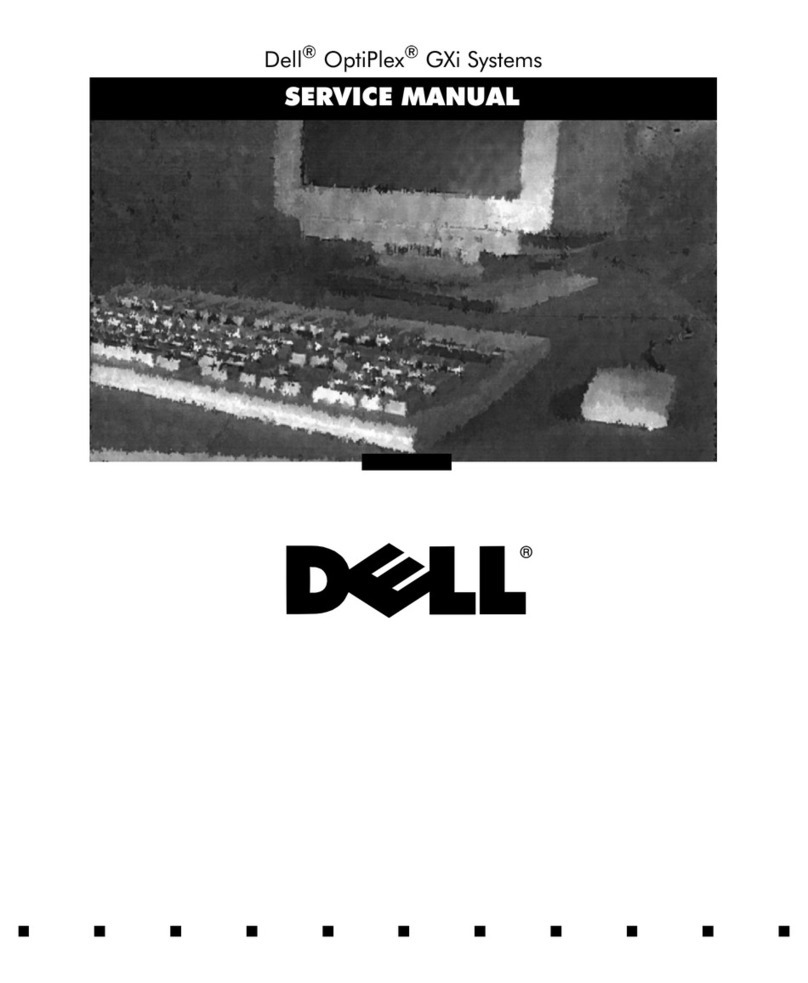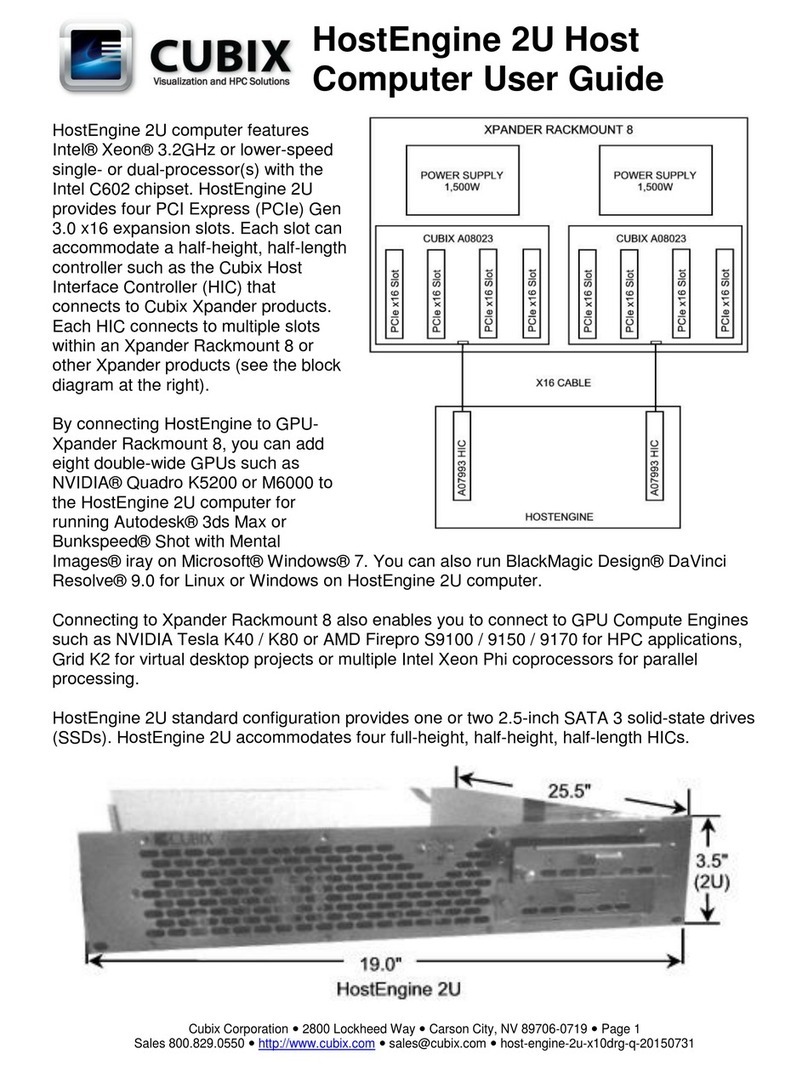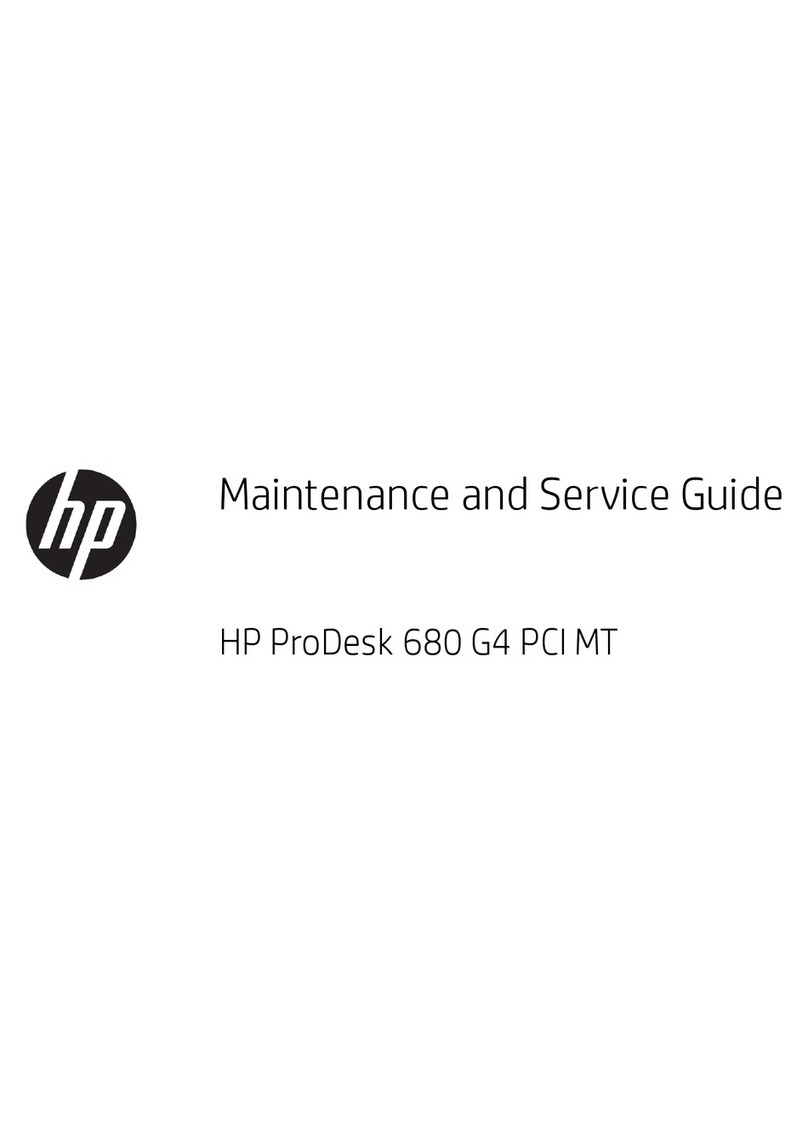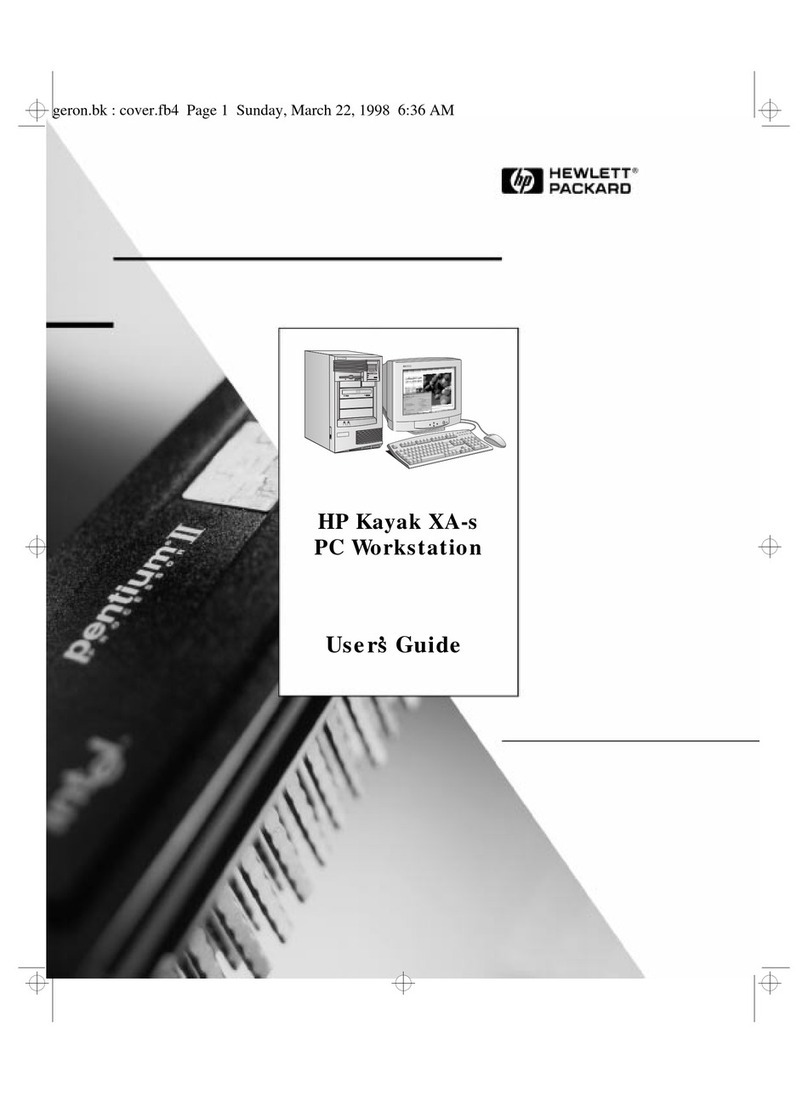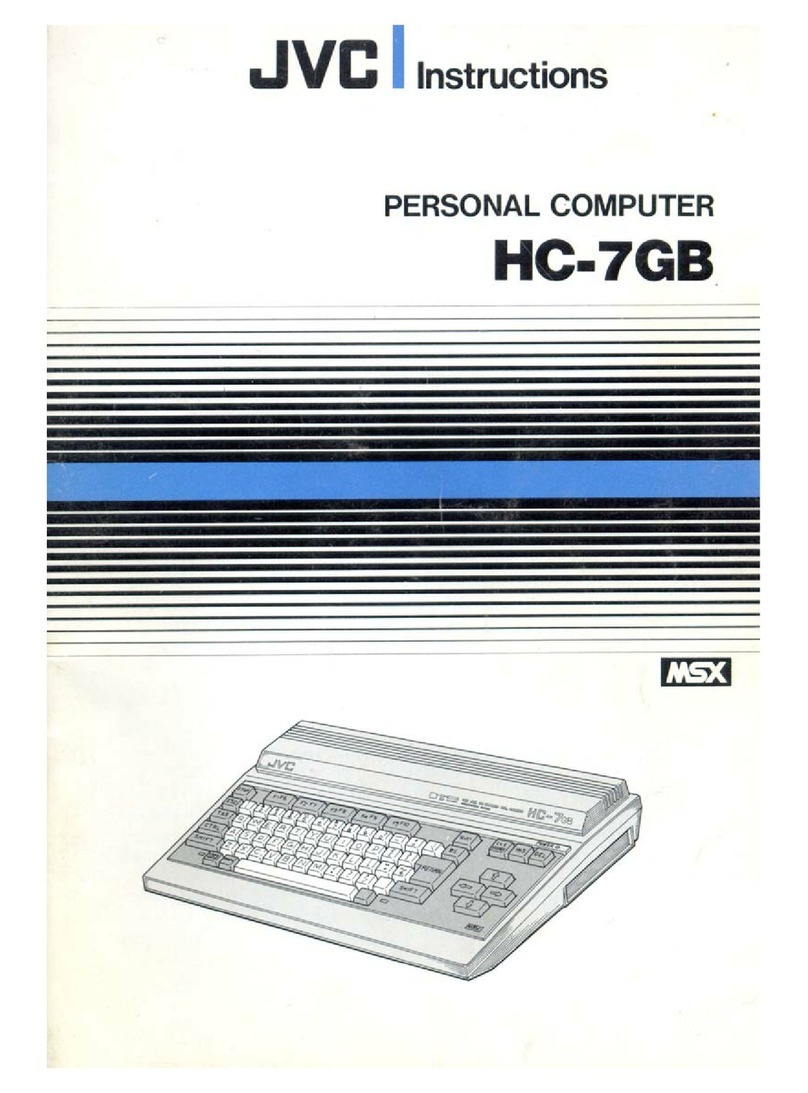Novell D7171A - NetServer - LPr User manual

Overview and Installation
100-004511-001 A
August 31,1999
Final

Overview and Installation
100-004511-001 A
August 31, 1999
Final
front.enu Temp. Rev 95G.3.enu.3 15 Apr 97
disclaimer
Novell, Inc. makes no representations or warranties with respect to the
contents or use of this documentation, and specifically disclaims any
express or implied warranties of merchantability or fitness for any
particular purpose. Further, Novell, Inc. reserves the right to revisethis
publication and to make changes to its content, at any time, without
obligation to notify any person or entity of such revisions or changes.
Further, Novell, Inc. makes no representations or warranties with
respect to any software, and specifically disclaims any express or
implied warranties of merchantability or fitness for any particular
purpose. Further, Novell,Inc.reserves therightto make changes to any
and all parts of Novell software, at any time, without any obligation to
notify any person or entity of such changes.
export notice
This product may require export authorization from the U.S.
Department of Commerce prior to exporting from the U.S. or Canada.
trademarks
Novell and NetWare and GroupWise are registered trademarks of
Novell, Inc. in the United States and other countries. ConsoleOne, NDS,
NetWare Cluster Services, Novell Client, and Novell Storage Services
are trademarks of Novell, Inc. Novell Authorized Reseller is a service
mark of Novell, Inc.
Windows and Windows NT are registered trademarks of Microsoft
Corporation. Netscape Enterprise Server is a trademark of Netscape
Communications Corporation. Oracle is a registered trademark of
Oracle Corporation.
Copyright © 1999 Novell, Inc. All rights reserved. No part of this
publication may be reproduced, photocopied, stored on a retrieval
system, or transmitted without the express written consent of the
publisher.
U.S. Patent Nos. 5,157,663; 5,349,642; and 5,455,932. U.S. Patent
Application No. 5,572,528. U.S. and Foreign Patents Pending.
Novell, Inc.
122 East 1700 South
Provo, UT 84606
U.S.A.
Overview and Installation
8/99
100-004511-001 A

Contents iii
Overview and Installation
100-004511-001 A
August 31, 1999
Novell Confidential
Final
booktoc.enu Temp. Rev 95G.3.enu.3 15 Apr 97
C
ontents
Introduction to Cluster Services
Introduction to Cluster Services. . . . . . . . . . . . . . . . . . . . . . . . . . . v
1Overview
Product Features . . . . . . . . . . . . . . . . . . . . . . . . . . . . . . . . . . 1
Product Benefits. . . . . . . . . . . . . . . . . . . . . . . . . . . . . . . . . . . 2
Cluster Configuration . . . . . . . . . . . . . . . . . . . . . . . . . . . . . . . . 5
Cluster Components . . . . . . . . . . . . . . . . . . . . . . . . . . . . . . . . 6
2 Installation and Setup
Hardware Requirements . . . . . . . . . . . . . . . . . . . . . . . . . . . . . . 7
Software Requirements . . . . . . . . . . . . . . . . . . . . . . . . . . . . . . . 7
Shared Disk System Requirements. . . . . . . . . . . . . . . . . . . . . . . . . 8
Installing NetWare Cluster Services . . . . . . . . . . . . . . . . . . . . . . . . 9
NetWare Cluster Services Licensing . . . . . . . . . . . . . . . . . . . . . 9
Begin the Installation . . . . . . . . . . . . . . . . . . . . . . . . . . . . . 11
Add Servers to the Cluster . . . . . . . . . . . . . . . . . . . . . . . . . . 13
Setting Up NetWare Cluster Services. . . . . . . . . . . . . . . . . . . . . . . . 14
Create Cluster Volumes. . . . . . . . . . . . . . . . . . . . . . . . . . . . 15
Cluster-Enable Volumes . . . . . . . . . . . . . . . . . . . . . . . . . . . 15
Create Cluster Resource Templates . . . . . . . . . . . . . . . . . . . . . 16
Create Cluster Resources. . . . . . . . . . . . . . . . . . . . . . . . . . . 17
Configure Load Scripts . . . . . . . . . . . . . . . . . . . . . . . . . . . . 17
Configure Unload Scripts . . . . . . . . . . . . . . . . . . . . . . . . . . . 18
Set Failover and Failback Modes . . . . . . . . . . . . . . . . . . . . . . . 19
Assign Nodes to a Resource . . . . . . . . . . . . . . . . . . . . . . . . . 20
Configuration Settings. . . . . . . . . . . . . . . . . . . . . . . . . . . . . . . . 20
Client Configuration . . . . . . . . . . . . . . . . . . . . . . . . . . . . . . 20
Edit Quorum Membership and Timeout Properties . . . . . . . . . . . . . . 21
Membership . . . . . . . . . . . . . . . . . . . . . . . . . . . . . . . 21
Timeout . . . . . . . . . . . . . . . . . . . . . . . . . . . . . . . . . 22

iv Overview and Installation
Overview and Installation
100-004511-001 A
August 31, 1999
Novell Confidential
Final
booktoc.enu Temp. Rev 95G.3.enu.3 15 Apr 97
Cluster Protocol Properties. . . . . . . . . . . . . . . . . . . . . . . . . . 22
Heartbeat . . . . . . . . . . . . . . . . . . . . . . . . . . . . . . . . 22
Tolerance. . . . . . . . . . . . . . . . . . . . . . . . . . . . . . . . 22
Master Watchdog. . . . . . . . . . . . . . . . . . . . . . . . . . . . 23
Slave Watchdog . . . . . . . . . . . . . . . . . . . . . . . . . . . . 23
Max Retransmits . . . . . . . . . . . . . . . . . . . . . . . . . . . . 23
Cluster Port Properties . . . . . . . . . . . . . . . . . . . . . . . . . . . . 23
Cluster Node Properties . . . . . . . . . . . . . . . . . . . . . . . . . . . 23
Number+IP Address . . . . . . . . . . . . . . . . . . . . . . . . . . 24
NCP Server. . . . . . . . . . . . . . . . . . . . . . . . . . . . . . . 24
Migrate Resources . . . . . . . . . . . . . . . . . . . . . . . . . . . . . . . . . 24
Identify Cluster and Resource States . . . . . . . . . . . . . . . . . . . . . . . 25
NetWare Cluster Services Console Commands . . . . . . . . . . . . . . . . . . 27

Introduction to Cluster Services v
Overview and Installation
100-004511-001 A
August 31, 1999
Novell Con
f
idential
Preface Temp. Rev 2.02 21 Jan 99
Introduction to Cluster Services
Novell Cluster Services is a server clustering system that ensures high
availability and manageability of critical network resources including data
(volumes), applications, server licenses, and services. It is a multinode, NDS-
enabled clustering product for NetWare 5 that supports failover, failback, and
migration (load balancing) of individually managed cluster resources.

vi Overview and Installation
Overview and Installation
100-004511-001 A
August 31, 1999
Novell Con
f
idential
Preface Temp. Rev 2.02 21 Jan 99

Chapter 1: Overview 1
Overview and Installation
100-004511-001 A
August 31, 1999
Novell Con
f
idential
95g_tpl.fm Temp. Rev 2.02 26 Feb 99
chapter
1
Overview
NetWare®Cluster ServicesTM is a server clustering system that ensures high
availability and manageability of critical network resources including data
(volumes), applications, server licenses, and services. It is a multinode
clustering product for NetWare 5 that is enabled for NDSTM and supports
failover, failback, and migration (load balancing) of individually managed
cluster resources.
Product Features
NetWare Cluster Services includes several important features to help you
ensure and manage the availability of your network resources. These include:
• Support for shared disk configurations or local disk configurations.
• Multinode all-active cluster (up to32 nodes). Any NetWare server in the
cluster can restart resources (applications, services, IP addresses, and
volumes) from a failed server in the cluster.
• Single point of administration through a Java-based ConsoleOneTM
cluster configuration and monitoring GUI.
• The ability to tailor a cluster to the specific applications and hardware
infrastructure that fit your organization.
• Dynamic assignment and reassignment of server storage on an as-
needed basis.

2Overview and Installation
Overview and Installation
100-004511-001 A
August 31, 1999
Novell Con
f
idential
Temp. Rev 2.02 26 Feb 99
Product Benefits
NetWare Cluster Services allows you to configure up to 32 NetWare 5 servers
into a high-availability cluster, where resources can be dynamically switched
or moved to any server in the cluster. Resources can be configured to
automatically switch or be moved in the event of a server failure, or can be
moved manually to troubleshoot hardware or balance the workload.
NetWare Cluster Services provides high availability from commodity
components. Lower costs are obtained through the consolidation of
applications and operations onto a cluster. The ability to manage a cluster from
a single point of control and to adjust resources to meet changing workload
requirements (thus, manually “load balance” the cluster) are also important
benefits of NetWare Cluster Services.
Anequally important benefit of implementing NetWare Cluster Servicesis that
you can reduce unplanned service outages and reduce planned outages for
software and hardware maintenance and upgrades.
Reasons you would want to implement NetWare Cluster Services include:
• Increased availability
• Improved performance
• Low cost of operation
• Scalability
• Disaster recovery
• Data protection
• Shared resources
Shared disk fault tolerance can be obtained by implementing RAID Level 5 on
the shared disk subsystem.
An example of the benefits NetWare Cluster Services provides can be better
understood through the following scenario.
Suppose youhaveconfigureda three-server cluster, with aWeb server installed
oneach of the three servers in the cluster. Each of the serversin the cluster hosts

Chapter 1: Overview 3
Overview and Installation
100-004511-001 A
August 31, 1999
Novell Con
f
idential
chapter.enu Temp. Rev 2.02 26 Feb 99
two Web sites. All the data, graphics, and e-mail messages for each Web site is
stored on a shared disk subsystem connected to each of the servers in the
cluster. The following figure depicts how this setup might look.
During normal cluster operation, each server is in constant communication
with the other servers in the cluster and performs periodic polling of all
registered resources to detect failure.
Suppose Web Server 1 experiences hardware or software problems and the
users depending on Web Server 1 for Internet access, e-mail, and information
lose their connections. The following figure shows how resources are moved
when Web Server 1 fails.
Web Server 3
Web Site C
Web Site D
Web Server 2
Fiber Channel Switch
Shared Disk
System
Web Site E
Web Site F
Web Site A
Web Site B
Web Server 1
Web Server 1 Web Server 3
Web Site A
Web Site C
Web Site D
Web Server 2
Fiber Channel Switch
Shared Disk
System
Web Site B
Web Site E
Web Site F

4Overview and Installation
Overview and Installation
100-004511-001 A
August 31, 1999
Novell Con
f
idential
Temp. Rev 2.02 26 Feb 99
Web Site A moves to Web Server 2 and Web Site B moves to Web Server 3. IP
addresses and applicable licenses also move to Web Server 2 and Web Server 3.
When you configured the cluster, you decided where the Web sites hosted on
each Web server would go should a failure occur. In the previous example you
configured Web Site A to move to Web Server 2 and Web Site B to move to
Web Server 3. This way, the workload once handled by Web Server 1 is evenly
distributed.
When Web Server 1 failed, NetWare Cluster Services software
• Detected a failure.
• Restarted applications (that were running on Web Server 1) on Web
Server 2 and Web Server 3 as specified.
• Transferred IPaddresses to Web Server 2 and Web Server 3 as specified.
• Remounted the shared data volumes (that were formerly mounted on
Web server 1) on Web Server 2 and Web Server 3 as specified.
In this example, the failover process happened quickly and users regained
access to the Internet, Web site information, and e-mail within seconds, and in
most cases, without having to log in again.
Now suppose the problems with Web Server 1 are resolved, and Web Server 1
is returned to a normal operating state. Web Site A and Web Site B will
automatically failback, or be moved back to Web Server 1, and Web Server
operation will return back to the way it was before Web Server 1 failed.
NetWare Cluster Services also provides resource migration capabilities. You
can move applications, Web sites, etc. to other servers in your cluster without
waiting for a server to fail.
For example, you could have manually moved Web Site A or Web Site B from
Web Server 1 to either of the other servers in the cluster. You might want to do
this to upgrade or perform scheduled maintenance on Web Server 1, or just to
increase performance or accessibility of the Web sites.

Chapter 1: Overview 5
Overview and Installation
100-004511-001 A
August 31, 1999
Novell Con
f
idential
chapter.enu Temp. Rev 2.02 26 Feb 99
Cluster Confi
g
uration
Typical cluster configurations normally include a shared disk subsystem
connected to all servers in the cluster. The shared disk subsystem can be
connected via high-speed fiber channel cards, cables, and switches, or be
configured to useshared SCSI.If a server fails, anotherdesignatedserver inthe
cluster automatically mounts the shared subsystem volumes previously
mounted on the failed server. This gives networkusers continuous access to the
volumes on the shared disk subsystem.
Typical resources might include data (volumes), applications, server licenses,
and services. The following figure shows how a typical fiber channel cluster
configuration might look.
Although fiber channel is the recommended configuration, you can configure
your cluster to use shared SCSI. The following figure shows how a typical
shared SCSI cluster configuration might look.
Sys Sys Sys Sys Sys Sys
Server 1 Server 2 Server 3 Server 4 Server 5 Server 6
Fiber Channel Switch
Shared Disk
System
Network Hub
Fiber
Channel
Card(s)
Network
Interface
Card(s)

6Overview and Installation
Overview and Installation
100-004511-001 A
August 31, 1999
Novell Con
f
idential
Temp. Rev 2.02 26 Feb 99
Cluster Components
The following components make up a NetWare Cluster Services cluster:
• From 2 to 32 NetWare 5 servers configured to use IP, each containing at
least one local disk device (used for a local SYS: volume).
• NetWare Cluster Services software running on each NetWare 5 server in
the cluster.
• A shared disk subsystem connected to all servers in the cluster (optional,
but recommended for most configurations).
• High-speed fiber channel cards, cables, and switch or SCSI cards and
cables used to connect the servers to the shared disk subsystem.
Sys Sys
Server 1 Server 2
Shared Disk
System
Network Hub
SCSI
Adapter
SCSI
Adapter
Network
Interface
Card
Network
Interface
Card

Chapter 2: Installation and Setup 7
Overview and Installation
100-004511-001 A
August 31, 1999
Novell Con
f
idential
Chap-App Temp. Rev 2.02 21 Jan 99
chapter
2
Installation and Setup
Hardware Requirements
The following list specifies hardware requirements for installing NetWare®
Cluster ServicesTM. These requirements represent the minimum hardware
configuration. Additional hardware might be necessary depending on how you
intend to use NetWare Cluster Services.
A minimum of two NetWare 5 servers. A maximum of eight servers per
cluster is recommended for this release.
At least 64 MB of memory on all servers in the cluster (128 MB
recommended for failing multiple applications to the same server).
At least one local disk device (not shared) for volume SYS: on each
server.
It is recommended the client machine used to manage the cluster be at
least 300 MHz or above and have at least 90 MB of memory. Although
you can use slower machines with less memory, faster processor
machines will greatly increase the performance of ConsoleOne, so
choose the highest performance workstation available.
Software Requirements
You must have the NetWare 5 Support Pack 3 or later running on each cluster
server. You can install Support Pack 3 for NetWare 5.0 from the NetWare
Cluster Services product CD. Ensure the following requirements are met:
All serversin the cluster configured with theIP protocol and on the same
IP subnet.
All servers in the cluster in the same NDSTM tree.

8Overview and Installation
Overview and Installation
100-004511-001 A
August 31, 1999
Novell Con
f
idential
Chap-App Temp. Rev 2.02 21 Jan 99
The Novell®ClientTM included on the NetWare Cluster Services product
CD installed onthe workstations used to manage and access your cluster.
ConsoleOneTM installed (from the NetWare Cluster Services product
CD) on the workstation used to manage your cluster.
Shared Disk System Requirements
A shared disk system is required for each cluster if you want data to be highly
available. If a shared disk subsystem is used, ensure the following:
At least 10 MB of free disk space on the shared disk system for creating
a special cluster partition.
The NetWare Cluster Services installation automatically allocates one
cylinder on one drive of the shared disk system for the special cluster
partition. If the drive where the cluster partition is to be created on the
shared disk system is larger than 10 GB, you may need more free space.
The shared disk system is properly set up and functional according to the
manufacturer’s instructions.
Prior to installation, verify that all the drives in your shared disk system
are recognized by NetWare by running the List Devices command on
each server you intend to add to your cluster. If any of the drives in the
shared disk system do not show up in the list, consult your NetWare 5
documentation or the shared disk system documentation for
troubleshooting information.
All shared disk system volumes are configured to use Novell Storage
ServicesTM.
The disks contained in the shared storage subsystem are configured in a
mirroring or RAID 5 configuration to add fault tolerance to the shared
disk subsystem.
War ning Ifthedisksinthe shared disk system arenotconfigured touse mirroring orRAID
5, a single device error can cause a system failure. NetWare Cluster Services
software will not protect against such faults.

Chapter 2: Installation and Setup 9
Overview and Installation
100-004511-001 A
August 31, 1999
Novell Con
f
idential
Chap-App Temp. Rev 2.02 21 Jan 99
Installing NetWare Cluster Services
The NetWare Cluster Services installation
• Creates a new Cluster object in NDS.
• Installs NetWare Cluster Services software on the servers you specify to
be part of your cluster.
• Updates the AUTOEXEC.NCFfile on each of theservers in your cluster.
Note changes to AUTOEXEC.NCF:
• LOAD TCPIP.NLM is replaced with
LOAD TCPIP.NLM FORWARD=NO
This command disables IP forwarding. If IP forwarding is enabled,
client reconnect will not function, and users won’t automatically
reconnect to different servers in the cluster after failover.
• NSS is replaced with NSS/AUTODEACTIVATE
VOLUME=ALL
NetWare Cluster Services automatically mounts cluster volumes
on specified servers in the cluster. This command ensures that
clustervolumesdon’taccidentally getmounted onmultiple servers
in the cluster, which would cause data corruption. Without this
command, the MOUNT ALL command could be run from any
server console and that server would try to mount a volume that
might already be mounted on another server in the cluster.
Once you have created a cluster, you will need to run the NetWare Cluster
Services installation again each time you want to add servers to your cluster.
NetWare Cluster Services Licensing
NetWare Cluster Services changes the licensing scheme currently provided
with NetWare 5. The license changes performed by the NetWare Cluster
Services installation depend on whether you have a Master License Agreement
(MLA). Changes to NetWare 5 non-MLA licensing include:
• The server base licenses for each cluster server are deleted and are
replaced with a server base license upgrade. This server base license
upgrade works specifically with NetWare Cluster Services.

10 Overview and Installation
Overview and Installation
100-004511-001 A
August 31, 1999
Novell Con
f
idential
Chap-App Temp. Rev 2.02 21 Jan 99
The server base license upgrade is installed when you install NetWare
Cluster Services and is placed in the same context as its Server object.
• All server connection licenses for each cluster server are deleted and are
all replaced with one or more Cluster User Access Licenses (CUAL).
Youneed one or more CUALs toequalthe numberof connections for the
server connection licensesthat are deleted. The CUAL is an object in the
NDS database and acts as a holding container for connections. This
means that clients connecting to any cluster server can draw connections
from the CUAL as needed, as long as there are still connections
available.
The CUAL is installed when you install NetWare Cluster Services and
by default is placed in the lowest common context for all servers in the
cluster. In order for users to get connections to servers in the cluster,
CUALs need to be accessible to User objects. This means individual
CUALs need to be placed at or above the user context in the NDS tree so
they are accessible.
• The Cluster Server Licenseis a new license type and is required on every
server you have in your cluster. The Cluster Server License allows a
server to join a cluster.
The Cluster Server License is installed on a server when you install
NetWare Cluster Services on that server. The Cluster Server License
object is created in the same context as the Cluster object.
In most cases, the Cluster Server License is the only license required by
NetWare Cluster Services if an MLA license is present in the Directory tree.
TheNetWare Cluster Services installation willautomatically detectwhether an
MLA exists in the Directory tree and if so, install only the Cluster Server
License.
For more information on Novell Licensing Services go to http://
www.novell.com/documentation/lg/nls501/docui/index.html.

Chapter 2: Installation and Setup 11
Overview and Installation
100-004511-001 A
August 31, 1999
Novell Con
f
idential
Chap-App Temp. Rev 2.02 21 Jan 99
Begin the Installation
To begin the installation, insert the NetWare Cluster Services CD and complete
the following steps:
1. From the initial splash screen, launch the NetWare Cluster Services
installation.
Continue through the installation screens until you get to the screen that
prompts you to create a new cluster or edit an existing cluster.
2. Select Create a New Cluster or Edit an Existing Cluster, then click
Next.
3. Do one of the following:
• (If creating) Enter the name for the new Cluster object you are
creating andspecifythe Directorytreeand context whereyou want
it created. Then click Next.
• (If editing) Specify the Directory tree, context, and name of the
cluster you will add servers to. If you don’t know a cluster name,
browse and select one from the list. Then click Next.
4. Enter the name of the server you want to add to the cluster, or
browse and select one from the list, and then click Add to Cluster.
Repeat this step for every server you want to add to the cluster. Then
click Next.
You can also remove servers you just added to the cluster by selecting
them from the NetWare Servers in Cluster list and clicking Remove.
When you add a server to a cluster, NetWare Cluster Services
automatically detectsthe server’s IP address. If the server you are adding
has more than one IP address, you will be prompted to select the IP
address you want NetWare Cluster Services to use.
5. (Conditional) If you are creating a new cluster, specify whether your
cluster has a shared disk system and if so, select the drive where you
want the small cluster partition created. Then click Next.
NetWare Cluster Services requires a small cluster partition on the shared
disk system. You are also given the option of mirroring the partition for
greater fault tolerance.

12 Overview and Installation
Overview and Installation
100-004511-001 A
August 31, 1999
Novell Con
f
idential
Chap-App Temp. Rev 2.02 21 Jan 99
Impor tant You must have at least 10 MB of free space that is not part of an NSS partition
on one of the shared disk drives to create the cluster partition. If no free space
is available, the shared disk drives can’t be used by NetWare Cluster Services.
6. Choose whether or not you want the servers you are adding to your
cluster to reboot after installation, then click Next.
The installation program installs NetWare Cluster Services software on
the servers in yourcluster. It does not automatically load the software on
the servers in your cluster. An easy way to automatically load the
software is to reboot the servers you are adding to your cluster after the
installation is complete.
7. Specify the location of the license files and click Add > Next.
License files are located on the license diskettes included in the NetWare
Cluster Services product box. The Cluster Server License diskette
contains two Cluster Server Licenses,two Server Base License Upgrades
and one 10-user CUAL. Cluster Server licenses are the only licenses
required for most MLA customers. Additional CUALs, Server Base
License Upgrades, and Cluster Server Licenses can be obtained from
your Novell Authorized ResellerSM.
If you do not have a Master License Agreement, you will be prompted
for an activation key for each node you add to a cluster. Obtaining
activation keys will require you to provide the serial numbers for the
licenses you are upgrading. Activation keys can be obtained at http://
www.novell.com/products/activation.
You are given the option of installing with or without licenses. If you
choose to install without licenses, you will need to manually install the
necessary licenses at a later date using NetWare Administrator. NetWare
Cluster Services will not function without the proper licenses in place.
8. Continue through the final installation screen.
Theinstallation program will thencreate a new cluster for youandinstall
NetWareClusterServices software onthe servers you specified tobe part
of your cluster. If you are editing an existing cluster, the installation
program will just install NetWare Cluster Services software on the
servers you are adding to your cluster.

Chapter 2: Installation and Setup 13
Overview and Installation
100-004511-001 A
August 31, 1999
Novell Con
f
idential
Chap-App Temp. Rev 2.02 21 Jan 99
Add Servers to the Cluster
After creating your cluster, you will need to run the NetWare Cluster Services
installation again each time you want to add additional servers to your cluster.
If you plan to add new nodes to an existing cluster in the future, you should
reserve those nodes before bringing up your cluster. To reserve future nodes
before bringing up your cluster:
1. In ConsoleOne, right-click the Cluster object and select Properties.
This will bring up the Cluster Object property page.
2. Select the Protocol tab and then Internals.
3. Add the IP address and node number of your future node to the
Node number + IP address mapping table.
For example, if the IP address of your new node is 123.45.67.89 and the
next unused cluster node number is 6, add the following line.
nodeid 123.45.67.89 6
If you don’t reserve future nodes, each time you want to add a new node you
will need torun the installation program again, and also temporarilyremoveall
existing servers from the cluster and then havethem join the cluster again. This
is necessary for the existing servers in the cluster to recognize any new servers
you have added to the cluster.
To add additional servers to the cluster after creating the cluster, complete the
following steps.
1. Complete the installation procedure in “Begin the Installation” on
page 11.
Follow the instructions for editing an existing cluster. When you get to
the step to reboot new cluster servers after installation, choose not to
reboot.
2. Type CLUSTER DOWN at the server console on any server in the
cluster.
This will cause all servers in the cluster to leave the cluster at exactly the
same time. All loaded resources will be automatically unloaded. If all
servers don’t leave the cluster at exactly the same time, resources will

14 Overview and Installation
Overview and Installation
100-004511-001 A
August 31, 1999
Novell Con
f
idential
Chap-App Temp. Rev 2.02 21 Jan 99
beginto failover from servers that have left the cluster to servers that are
still in the cluster.
3. Type ULDNCS at the server console on every server in the cluster.
This will unload NetWare Cluster Services software on each server.
4. On a server in your NDS tree, Run DSRepair > Advanced Options
menu > Replica and Partition Operations > Synchronize the Replica
on All Servers.
This is necessary to resynchronize the NDS tree. If possible, DSRepair
should be run on a server that contains a master replica of the root
partition.
5. Reboot the new server or servers you have just added to the cluster.
6. Type LDNCS at the server console on each server in the cluster
except the new server or servers you have just added.
This reloads NetWare Cluster Services software on existing cluster
servers and causes them to rejoin the cluster. The existing servers in the
cluster will now recognize the servers you have just added.
Setting Up NetWare Cluster Services
If you created a new cluster, you now need to create and configure cluster
resources, and if necessary, create cluster volumes. You also should consider
cluster-enabling NetWare volumes and creating cluster resource templates.
While ConsoleOne is required for most cluster-related tasks, you can use
NetWare Administrator to modify trustee assignmentson files, directories, and
cluster-enabled volumes. To use NetWare Administrator to modify trustee
assignments, you will first need to establish a connection to the server or
cluster-enabled volume.
This manual suits for next models
3
Table of contents

